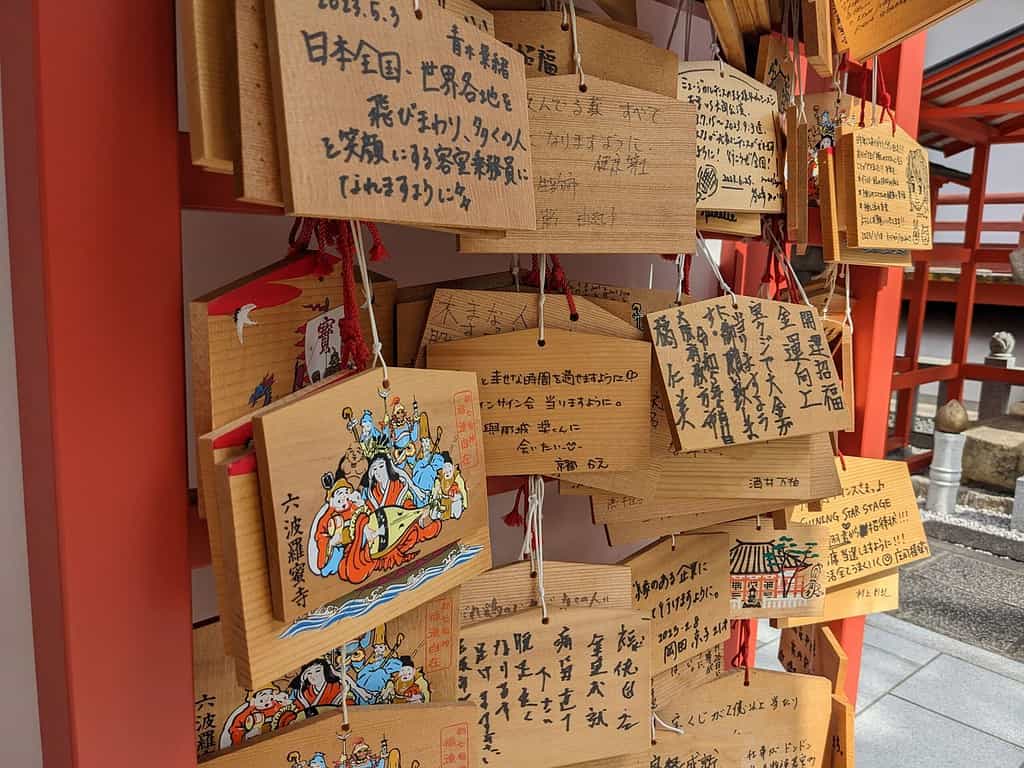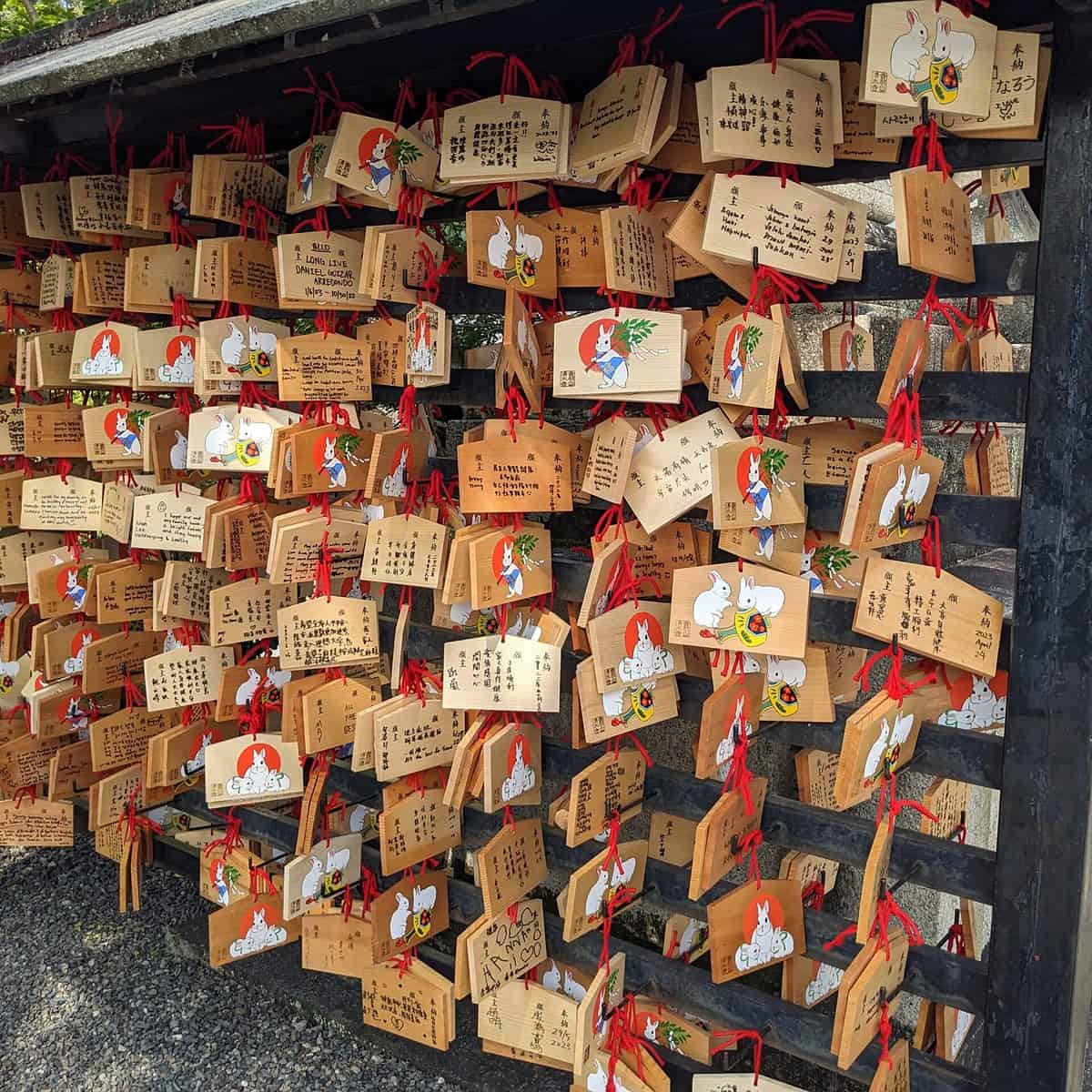Konnichiwa! Have you ever heard of Japanese Ema? If not, get ready to immerse yourself in the fascinating world of these traditional prayer plaques. Ema, which translates to “picture horse,” are wooden tablets on which people write their wishes or prayers. In this article, we will delve into the history of Japanese Ema, explore their significance in Japanese culture, discuss various types of Ema, and uncover the symbolism behind these captivating prayer plaques.
What are Japanese Ema?
Japanese Ema are wooden plaques traditionally found at Shinto shrines and Buddhist temples throughout Japan. These rectangular tablets are made of wood and feature a blank or pre-printed front surface, often adorned with intricate designs and illustrations. Visitors to the shrines and temples write their wishes or prayers on the back of the ema and then hang them on dedicated display boards or structures within the sacred grounds.
The History of Japanese Ema
To truly appreciate the tradition of Japanese Ema, we must delve into its rich history. The origin of Ema can be traced back to the 8th century during the Nara period (710-794 CE). Initially, horses were considered sacred animals and were believed to have the power to carry prayers to the gods. People would donate live horses to temples and shrines as offerings, but over time, this practice evolved into the use of wooden tablets in the shape of horses.
During the Kamakura period (1185-1333 CE), the tradition of using wooden plaques in the shape of horses spread throughout Japan. The ema gradually transitioned from horse-shaped tablets to the rectangular shape commonly seen today. As the practice became more widespread, people began to write their wishes and prayers directly on the ema instead of offering live horses. This shift made Ema more accessible and allowed individuals from all walks of life to participate in this spiritual practice.
The Significance of Japanese Ema
Japanese Ema hold deep significance within the country’s culture and spirituality. They serve as a means for individuals to communicate their hopes, dreams, and desires to the deities or spirits associated with the shrine or temple. Writing one’s wishes or prayers on the back of an ema is believed to make the intention more tangible and increase the likelihood of it being heard and answered.
Ema also represent a form of gratitude and respect towards the deities. When a wish or prayer is fulfilled, it is customary for individuals to return to the shrine or temple and offer thanks by hanging a second ema expressing their gratitude. This act of appreciation reinforces the spiritual connection between the individual and the divine, fostering a sense of harmony and gratitude.

Types of Japanese Ema
Japanese Ema come in various forms, each with its own unique characteristics and purposes. Here are a few notable examples:
- Traditional Ema: These are the classic rectangular-shaped ema commonly found at shrines and temples. They often feature intricate illustrations related to the specific deity or spiritual theme associated with the sacred place. The designs can vary widely, ranging from animals and nature motifs to symbols of luck and prosperity.
- Character Ema: In recent years, Ema featuring popular characters from manga, anime, and pop culture have gained popularity. These ema often depict beloved characters and provide a contemporary twist to the traditional practice of writing wishes and prayers.
- Seasonal Ema: Some shrines and temples offer ema that are specifically designed to reflect the current season or festival. For example, during cherry blossom season, ema might feature beautiful sakura illustrations, while during the New Year, ema might display traditional symbols associated with luck and renewal.
Symbolism of Japanese Ema
Japanese Ema symbolize the connection between the human and spiritual realms. By writing wishes and prayers on the ema, individuals invite the deities or spirits to participate in their lives, seeking guidance, protection, and blessings. The act of hanging the ema on a dedicated display board or structure within the shrine or temple signifies the physical manifestation of the individual’s intention and strengthens the spiritual bond.
Summary
Japanese Ema are an integral part of the country’s cultural and spiritual fabric. Through these prayer plaques, individuals express their hopes, dreams, and gratitude to the deities or spirits associated with shrines and temples. The history, significance, and symbolism of Ema highlight the enduring bond between the human and divine realms in Japanese culture.
So, next time you come across the question “What are Japanese Ema?” you’ll be able to answer with confidence, sharing the history, cultural significance, and spiritual essence of these captivating prayer plaques. Immerse yourself in the tradition of Ema, and let your wishes and prayers be carried on the wings of faith, connecting you to the sacred realms.

